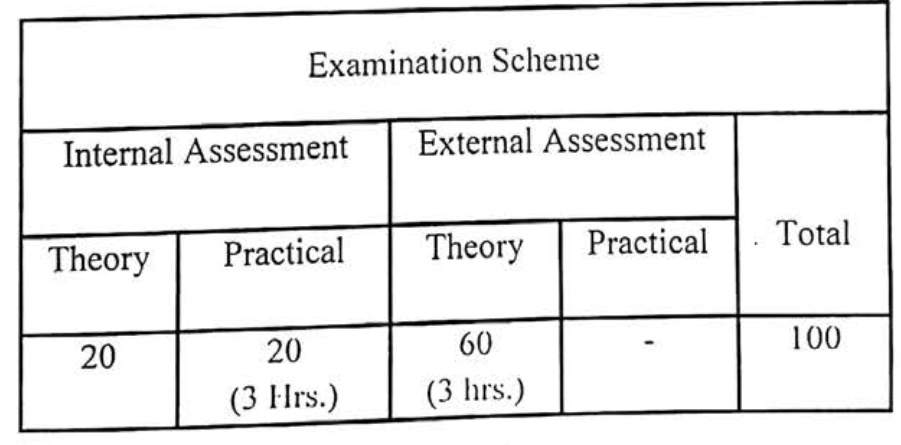Course Title: Scripting Language (3 Cr.)
Course Code: CACS254
Year/Semester: II/IV
Class Load: 6 Hrs. / Week (Theory: 3 Hrs, Practical: 3 Hrs.)
Course Description
This course includes both theoretical as well as practical knowledge of scripting language (client side & server side) along with database connectivity. So that students can develop more effective and efficient web-based application packages.
Course Objective
The general objectives of this course are to provide fundamental concepts of server-side script programming and client-side script programming using JavaScript and PHP respectively along with database connectivity.
Course Contents
Unit 1: Client-Side Scripting [15 Hrs.]
JavaScript: Introduction, Need of Client-Side Scripting Language, Formatting and Coding Conventions, JavaScript Files, Comments, Embedding JavaScript in HTML, Using Script Tag, No Script Tag, Operators, Control Structures, Array and For Each Loop, Defining and Invoking Functions, Built in Objects, Date Objects, Interacting With The Browser, Windows & Frames, Document Object Model, Event Handling, Forms, Cookies, Handling Regular Expression, Client Side Validations.
Unit 2: Server-Side Scripting with Database Connectivity [15 Hrs.]
PHP (8 Hrs.): Introduction to Server-Side Scripting Language, PHP introduction, Basic PHP Syntax, Comments in PHP, Variables, PHP Operators. Control Structures (If else, switch, all loops), Arrays, For Each Loop, Functions, Form Handling, PHP $_GET, PHP S_POST, PHP S_REQUEST, PHP date () Function, PHP include File, File Handling, File Uploading, PHP Sessions, Sending Emails, PHP Cookies.
MySQL (7 Hrs.): Introduction to MySQL, PHP MySQL Connect to a Database, closing a Connection, MySQL Data Types, MySQL Insert, MySQL Select, MySQL Where Clause, MySQL Delete, MySQL, Update, MySQL Aggregate Functions (sum, avg, count etc.); MySQL Order by and Group by Clause, MySQL Subqueries, MySQL Joins,
Unit 3 Advance server-side scripting [15 Hrs.]
Object Oriented Programming in PHP: classes and Objects, Defining and Using properties and methods, Constructors and Destructors, Method Overriding, Encapsulation, Inheritance, Polymorphism, Static Members, Exception Handling
AJAX (Asynchronous. JavaScript and XM 14: Using PHP, Using. PPH + MySQL
jQuery: Playing with Elements, Hiding and Unhiding Images. jQuery UI
JOOMLA: Introduction To CMS, Installation, Handling Joomla Back End. Customization In Joomla, Introduction To Extensions, Installation and Uses Of Extensions in Joomla, Template Development In Joomla, Artiseer (IDE), Module Development In Joomla, Component Development In Joomla, Introduction To MVC (Model, View and Controller)
WordPress Administrator level: Theme integration, creating pages, manages posts, Managing Widgets
Laboratory Works:
Laboratory works should be done covering all the topics listed above and a small project work should be carried out using the concept learnt in this course. Project should be assigned on Individual Basis.
Teaching Methods
The general teaching pedagogy includes class lectures, group discussions, case studies, guest lectures, research work, project work, assignments (theoretical and practical), and examinations (written and verbal), depending upon the nature of the topics. The teaching faculty will determine the choice of teaching pedagogy as per the need of the topics.
Evaluation

Text Books
1. Harvey M. Deitel, Paul J. Deitel & Abbey Deitel, “Internet and World Wide Web: How to Program”, 5th Edition, Pearson Education, 2012, ISBN: 9780273764021
2. Robin Nixon, “Learning PHP, MySQL, JavaScript and CSS”,2 nd Edition, 0′ Reilly Media, 2012, ISBN 978-44.9319267
Reference Books
1. Da Flanagan. ”JavaScript; The Definitive Guide”, O’ Reilly Media, 2011. ISBN. 139780596505524
2. David Sawyer McFarland, “JavaScript & jQuery; The Missing Manual” 2nd Edition, Pogue Press, 2011, ISBN: 978-1449399023
3. Luke Welling & Laura Thomson, “PHP and MySQL Web Development”, 5th Edition, Developer’s Library, 2014, ISBN: 978-0321833891
To download full Syllabus CLICK HERE

